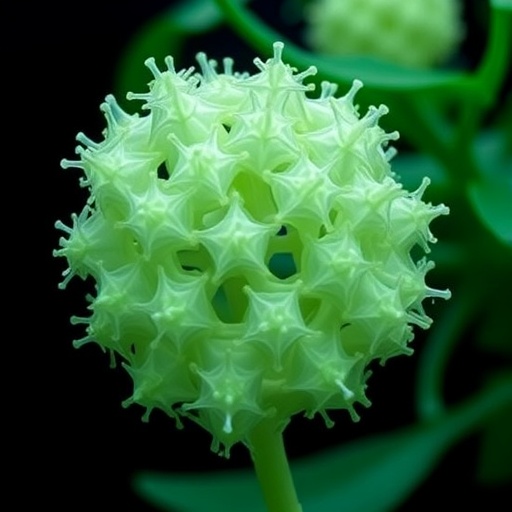In a groundbreaking development poised to revolutionize the production of plant-derived compounds, a research team at the University of California San Diego has unveiled a novel method to significantly enhance the efficiency of yeast cells as biofactories. This innovation centers on the optimization of cytochrome P450 enzymes—key catalysts in complex plant metabolic pathways—within yeast, thereby paving the way for sustainable and scalable manufacturing of diverse plant chemicals integral to plant defense and environmental resilience.
Plant compounds synthesized through cytochrome P450s perform vital ecological functions, enabling plants to mount defenses against pathogens, deter herbivorous pests, attract pollinators, and endure abiotic stresses like drought and heat. However, replicating and scaling their production outside of native plant tissues has long presented daunting challenges, particularly due to the difficulty of functionally expressing multiple cytochrome P450 enzymes in microbial hosts.
The research led by UC San Diego’s Jacobs School of Engineering researchers Yanran Li and Shanhui Xu focuses on a crucial, yet previously underappreciated, component of cellular coordination: AtMSBP1, a membrane scaffold protein derived from plants. This protein acts as a master orchestrator, coordinating communications not only within the endoplasmic reticulum (ER)—the primary site of cytochrome P450 activity—but also facilitating cross-talk across organelles including mitochondria and vacuoles in yeast cells.
By expressing AtMSBP1 in engineered yeast strains, the team observed a remarkable remodeling of the yeast’s intracellular landscape. Notably, the expansion of the tubular ER network was accompanied by enhanced mitochondrial volume and the induction of vacuole fission events. Such cross-organelle adaptations contribute to a metabolically dynamic environment, fostering optimal conditions for cytochrome P450 enzyme functionality.
Surprisingly, the presence of AtMSBP1 itself was not strictly necessary to sustain this enhanced state. Its influence in establishing robust cross-organelle interconnectivity persisted, suggesting that yeast cells can be engineered to emulate this supportive microenvironment even without continuous expression of the scaffold protein. This insight opens up new avenues for reprogramming yeast internal architecture to accommodate complex plant biosynthetic pathways.
Traditionally, efforts to boost cytochrome P450 enzyme activity in microbial hosts have fixated on modifying singular organelles or direct enzyme engineering. However, this study highlights that the integration and synergy between multiple organelles play a far more critical role. Enhancing inter-organelle collaboration, particularly between the ER, mitochondria, and vacuoles, facilitates improved electron transfer, metabolite trafficking, and cofactor availability—factors crucial to cytochrome P450’s catalytic prowess.
The implications of this work extend far beyond academic curiosity. Engineering yeast to efficiently replicate multi-step metabolic cascades involving several cytochrome P450 enzymes is a long-standing goal in biotechnology, given the immense industrial value of plant natural products. These include pharmaceuticals, fragrances, agrochemicals, and flavoring agents, many of which are difficult or unsustainable to extract directly from plants.
Moreover, the approach demonstrated by Li and Xu’s team has potential ramifications for environmental sustainability. Producing bioactive plant compounds through engineered yeast substantially reduces the land, water, and energy resources typically expended by conventional agriculture or chemical synthesis. It also mitigates risks associated with overharvesting and ecological disruption.
Scientifically, the discovery underscores the pivotal role of cellular infrastructure design in metabolic engineering. The concept of “cross-organelle coordination” elevates the paradigm from modifying isolated pathways to holistically orchestrating the intracellular milieu. This not only promises higher yields and efficiency but may also unlock access to previously inaccessible or unstable metabolic intermediates.
Future strategies inspired by these findings may involve fine-tuning organelle morphology, spatial distribution, and metabolic fluxes to create bespoke cellular “factories.” Such sophisticated engineering could lead to yeast strains optimized for diverse biosynthetic challenges, facilitating rapid prototyping and scalable production pipelines for a spectrum of natural and synthetic compounds.
The research, recently published in the prestigious journal Science Advances, details the molecular mechanisms by which AtMSBP1 facilitates inter-organelle dynamics. Through a combination of advanced imaging techniques, biochemical assays, and genetic manipulation, the team elucidated how scaffold proteins modulate organelle membranes and lumenal environments to optimize cytochrome P450 enzymatic cycles.
This work was made possible with support from the National Institutes of Health (grants DP2-AT011445 and R35 ES031707), highlighting the importance of sustained funding in pioneering bioengineering research. The collaborative nature of the study, bridging plant biology, synthetic biology, and cellular engineering, exemplifies the interdisciplinary efforts necessary to tackle complex biosynthetic challenges.
As we stand on the cusp of a new era in synthetic biology, the UC San Diego team’s breakthrough is a potent reminder that nature’s biochemical complexity often demands equally intricate solutions. By harnessing and augmenting the fundamental cellular architecture, scientists are now better equipped than ever to translate the chemistry of plants into viable, eco-friendly biotechnological applications. The vision of yeast as versatile, high-efficiency “micro-factories” producing a wealth of beneficial plant metabolites is no longer a distant aspiration but a tangible reality swiftly coming into focus.
Subject of Research: Engineering yeast cellular architecture to enhance plant cytochrome P450 enzyme activity for sustainable biosynthesis of plant-derived compounds.
Article Title: Enhancing Cross-organelle Coordination to Advance Plant Cytochrome P450 in Yeast
News Publication Date: 24-Oct-2025
Web References: https://doi.org/10.1126/sciadv.ady7184
References: Li, Y., Xu, S., et al. (2025). Enhancing Cross-organelle Coordination to Advance Plant Cytochrome P450 in Yeast. Science Advances, 24 October 2025. DOI: 10.1126/sciadv.ady7184
Keywords: cytochrome P450, yeast engineering, cross-organelle coordination, synthetic biology, metabolic engineering, plant natural products, endoplasmic reticulum, mitochondria, vacuoles, AtMSBP1, biomanufacturing, sustainable biotechnology




